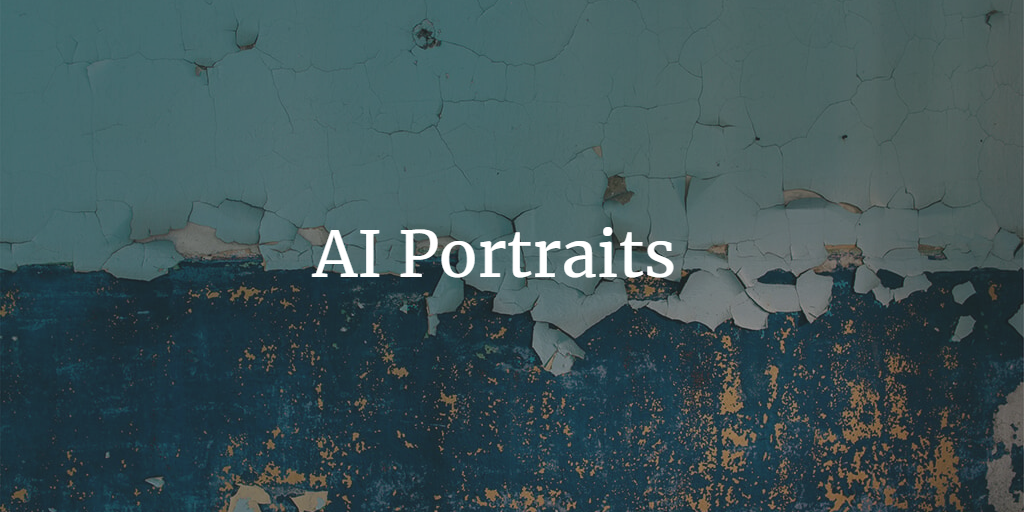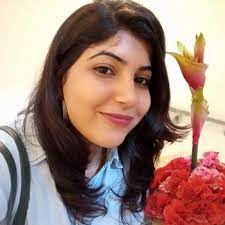Creativity at Scale: Can You Really Create Realistic-Looking AI Portraits?

Table of Contents
Introduction
How AI Creates Art
The Magic of Generative Adversarial Networks (GANs)
The Future of AI in Art
Deep Dive into the Process of AI-Generated Art
The Ethical Aspect of AI-Generated Art
The Future of AI Portraits
The Technology Behind AI Portraits
The Intersection of AI and Human Creativity
Conclusion
Introduction
In recent years, we've seen an explosion of artificial intelligence (AI) applications in various fields, including medicine, finance, and transport. But one area that has been uniquely fascinating is the intersection of AI and art. Specifically, the ability of AI to create stunningly realistic-looking portraits has captivated artists, technologists, and the general public alike. But can AI truly create realistic-looking portraits? And how does it achieve this?
How AI Creates Art
Art, often regarded as the quintessential human endeavor, might seem like an unusual area for AI application. After all, creating art requires imagination, creativity, and emotion - qualities traditionally believed to be uniquely human. However, AI, with its ability to learn from vast amounts of data and generate new content, has found a surprising foothold in the art world.
AI creates art by using algorithms that learn from a dataset of images. The algorithm, often a type of machine learning model known as a neural network, studies the features of each image in the dataset. It learns about shapes, colors, and patterns, as well as more complex concepts such as style and composition. Once the model is trained, it can generate new images that incorporate the features it has learned.
The Magic of Generative Adversarial Networks (GANs)
Generative Adversarial Networks (GANs) are a type of AI model that has been particularly successful in creating realistic-looking images. GANs consist of two parts: a generator, which creates new images, and a discriminator, which evaluates these images. The generator tries to create images that the discriminator cannot distinguish from real images, while the discriminator tries to get better at distinguishing real images from generated ones. This adversarial process leads to the creation of increasingly realistic image.
Here are some prominent AI tools that have been successful in generating incredibly realistic human portraits:
Artbreeder: Artbreeder is an online platform that uses GANs to create unique and realistic images. You can blend multiple images together, adjust their features, and create new images that are stunningly detailed and lifelike. Artbreeder has a specific section for creating portraits, making it an excellent tool for artists and creators looking to experiment with AI-generated art.
DeepArt: DeepArt uses a technique called style transfer to transform your photos into artistic masterpieces. It extracts the style from one image (such as a painting) and applies it to another image (like a portrait). The result is a unique blend of the two images that retains the original content but reflects the style of the artwork.
DeepDream Generator: Google's DeepDream Generator takes a slightly different approach to AI-generated art. Instead of generating new images, it modifies existing ones to produce dreamlike, surreal effects. While it may not create realistic portraits per se, it offers fascinating insights into how AI 'sees' and interprets images.
ThisPersonDoesNotExist.com: Created by software engineer Phillip Wang, this website uses GANs to generate hyper-realistic portraits of non-existent people. Every time you refresh the page, the site generates a new face, showcasing the power of AI in creating realistic imagery.
The Future of AI in Art
AI's capability to create realistic portraits is just the tip of the iceberg. As AI technology advances, we can expect to see more sophisticated and creative applications in the art world. For instance, AI could be used to create dynamic artwork that changes in response to viewer interaction or environmental factors. AI could also be used to analyze and learn from the work of great artists, generating new artwork that continues their legacy in unique ways.
The potential ethical and legal implications of AI-generated art are also areas of active discussion. Who owns the copyright for AI-generated artwork? How should we approach issues of originality and authenticity in AI-generated art? These are complex questions that we will need to navigate as AI becomes an increasingly prominent player in the art world.
Deep Dive into the Process of AI-Generated Art
The procedure for creating AI-generated art, particularly portraits, involves a series of intricate steps driven by sophisticated algorithms. The initial process involves feeding the AI model with a significant amount of data, often thousands of images, to learn and understand the concept of a portrait.
Step 1: Data Collection
The first step involves gathering a dataset of human faces. These images act as the learning material for the AI, from which it understands the nuances of human facial features. The images need to be diverse, encompassing different ages, races, genders, and expressions to allow the AI to generate a wide range of unique portraits.
Step 2: Training the AI Model
Once a dataset is ready, the AI model, typically a GAN, is trained. During this process, the generator network starts creating images based on random noise. Simultaneously, the discriminator network assesses these images based on its learning from the real dataset. Through continuous feedback from the discriminator, the generator gradually improves its capability to produce more realistic portraits.
Step 3: Generating the Artwork
After sufficient training, the AI model can generate portraits. These portraits can either be entirely AI-generated or can start from a base image (a process called style transfer), which is then modified by the AI to create a new piece of art.
Step 4: Human Curation
Despite the sophistication of AI, human involvement remains essential. Artists often curate the AI's output, select the most compelling images, and sometimes add their own artistic modifications. The resulting artwork represents a unique collaboration between human creativity and AI technology.
The Ethical Aspect of AI-Generated Art
The ability of AI to generate realistic portraits has led to fascinating ethical questions. One of the most prominent is the question of authorship. Who is the real artist behind AI-generated art - the AI, the programmer, or the curator?
The current consensus leans towards viewing AI as a tool used by human artists, similar to a paintbrush or a camera. Therefore, the human operator, who directs the AI and curates its output, is typically considered the artist. However, this is a developing area of both law and ethics, and consensus may shift as AI technology and its usage evolve.
The Future of AI Portraits
The future of AI-generated portraits is teeming with possibilities. As AI technology advances, we can expect AI-generated portraits to become even more realistic and detailed. Artists will also explore new ways of integrating AI into their work, potentially leading to new styles and genres of art.
At the same time, we'll need to navigate the ethical and legal challenges that come with these advancements. As we do, it's important to foster an open dialogue that includes artists, technologists, legal experts, and the public. This way, we can ensure that the development of AI art is guided by a diverse range of perspectives and interests.
The Technology Behind AI Portraits
The creation of AI portraits wouldn't be possible without substantial advancements in AI technology. Let's dive deeper into these technological advancements and understand how they have paved the way for realistic AI-generated portraits.
Understanding Neural Networks
Neural Networks, the backbone of modern AI, are designed to replicate the human brain's functioning to an extent. Composed of interconnected nodes or "neurons," these networks learn from data by adjusting the connections between these nodes. Deep learning, a subset of machine learning, uses neural networks with several hidden layers. These complex networks enable the AI to learn detailed and abstract concepts from data, allowing it to generate realistic images.
The Power of Generative Adversarial Networks (GANs)
GANs are a special type of neural network that have revolutionized the field of AI-generated art. As we discussed earlier, GANs consist of a generator and a discriminator. The generator produces new images, while the discriminator evaluates the generated images against real ones. Through this constant interplay, the generator improves its ability to create images that are indistinguishable from real ones.
GANs have become increasingly sophisticated. For instance, StyleGAN, developed by NVIDIA, introduces the concept of "style" into the GAN architecture, allowing more control over the generated images' details. Such advancements make GANs particularly suited for creating realistic portraits.
Emergence of AI Art Platforms
Platforms such as Artbreeder and DeepArt have democratized access to AI art tools, allowing anyone with an internet connection to create AI-generated images. These platforms provide user-friendly interfaces that hide the complex underlying technology, making AI art creation as simple as adjusting sliders or selecting images.
While these platforms provide excellent starting points, there's much to explore in this field. With open-source libraries and frameworks, artists and developers can build their own AI models to create unique artwork.
The Intersection of AI and Human Creativity
The rise of AI in art has sparked discussions about the role of AI in the creative process. Some argue that AI-generated art lacks the emotional depth and personal expression that characterize human-made art. Others see AI as a tool that can expand human creativity, allowing artists to explore new styles and mediums.
In reality, the most compelling AI art often comes from a collaboration between humans and AI. AI can generate new ideas and images, but human artists provide the creative direction, curate the AI's output, and add their personal touch.
Conclusion
The advent of AI has brought a new dimension to the world of art. AI tools, particularly GANs, have demonstrated an impressive capacity for creating realistic-looking portraits, pushing the boundaries of what we thought was possible. As artists and technologists continue to explore the possibilities of AI in art, we can expect to see even more creative and innovative applications in the future. Despite the challenges and questions that arise, one thing is clear: AI has a place in the art world, and it's here to stay.


